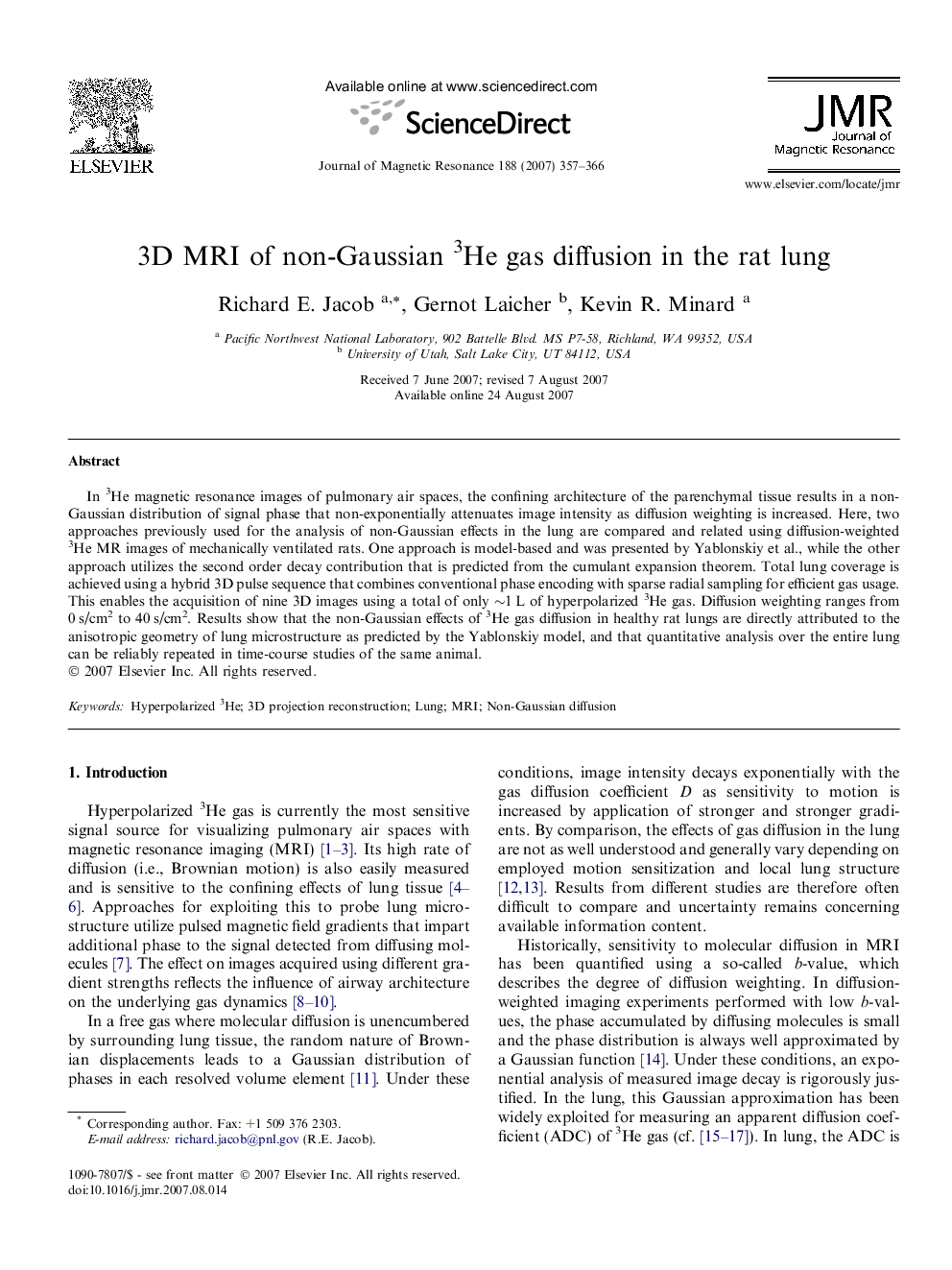| Article ID | Journal | Published Year | Pages | File Type |
|---|---|---|---|---|
| 5407338 | Journal of Magnetic Resonance | 2007 | 10 Pages |
Abstract
In 3He magnetic resonance images of pulmonary air spaces, the confining architecture of the parenchymal tissue results in a non-Gaussian distribution of signal phase that non-exponentially attenuates image intensity as diffusion weighting is increased. Here, two approaches previously used for the analysis of non-Gaussian effects in the lung are compared and related using diffusion-weighted 3He MR images of mechanically ventilated rats. One approach is model-based and was presented by Yablonskiy et al., while the other approach utilizes the second order decay contribution that is predicted from the cumulant expansion theorem. Total lung coverage is achieved using a hybrid 3D pulse sequence that combines conventional phase encoding with sparse radial sampling for efficient gas usage. This enables the acquisition of nine 3D images using a total of only â¼1Â L of hyperpolarized 3He gas. Diffusion weighting ranges from 0Â s/cm2 to 40Â s/cm2. Results show that the non-Gaussian effects of 3He gas diffusion in healthy rat lungs are directly attributed to the anisotropic geometry of lung microstructure as predicted by the Yablonskiy model, and that quantitative analysis over the entire lung can be reliably repeated in time-course studies of the same animal.
Related Topics
Physical Sciences and Engineering
Chemistry
Physical and Theoretical Chemistry
Authors
Richard E. Jacob, Gernot Laicher, Kevin R. Minard,
